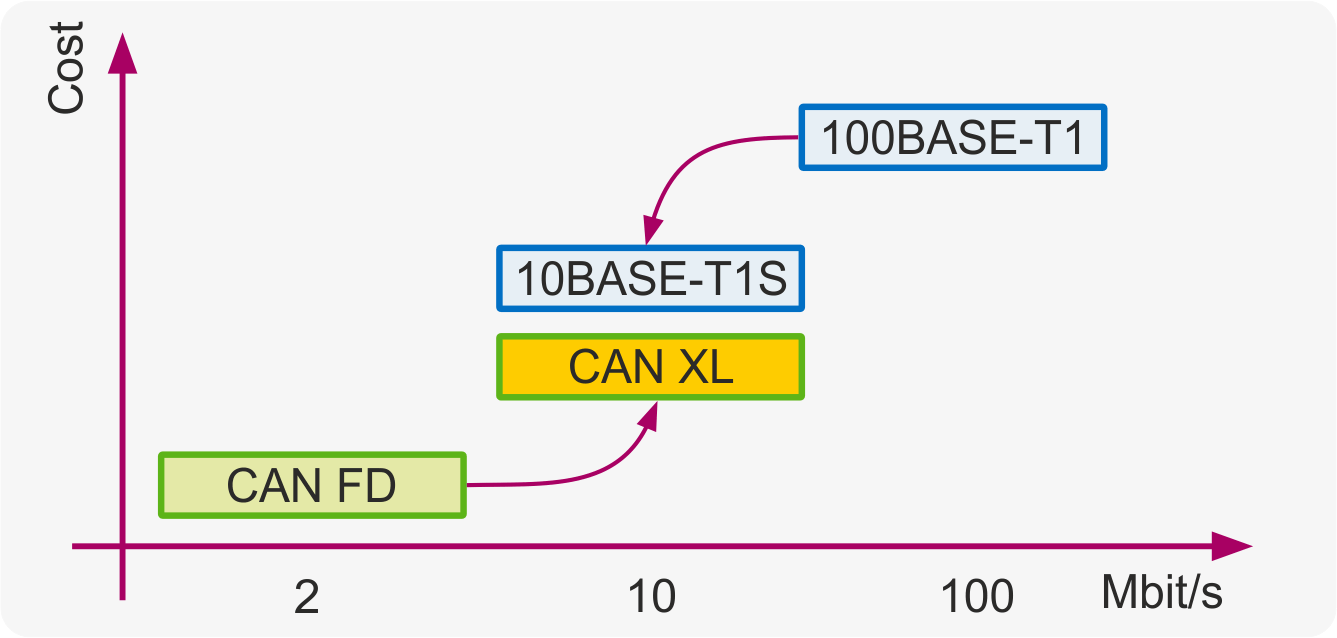Bosch Semiconductors

CAN XL provides a superior solution for data rates up to 10 Mbit/s by maintaining the advantages of the CAN protocol like collision-resolution by non-destructive arbitration.
With respect to the bitrate, CAN XL fills the gap between CAN FD and 100BASE-T1 (Ethernet).
 |
||
| Filling the gap between CAN FD and Ethernet | ||
Status
The specification of the CAN XL protocol and physical layer is done by the CiA Special Interest Group CAN XL in the CiA610 document series.
The CiA CAN XL specification started in December 2018 with the goal to have a technically stable CAN XL specification for OSI layer 2 (known as CAN XL protocol) until end of 2019. As second step, the ISO standardization will be started. In addition, many other CAN related standards will be updated simultaneously to support CAN XL. Examples are the CAN Conformance Test according to ISO16845 and the physical layer.
Key Protocol Features
- Net data rates up to 10 Mbit/s
- Large data fields with up to 2048 byte enable the use of higher layer protocols like IP (Internet Protocol) and even the tunneling of complete Ethernet frames
- Interoperability with CAN FD for mixed FD/XL networks
Physical Layer
- CAN XL will be operable with all transceivers:
- Classical CAN up to 1 Mbit/s
- CAN FD up to 2 Mbit/s and CAN FD-SiC up to 5-8 Mbit/s
- CAN XL up to 10 Mbit/s and beyond (to be developed)
 |
||
| Mixed FD/XL networks. | ||